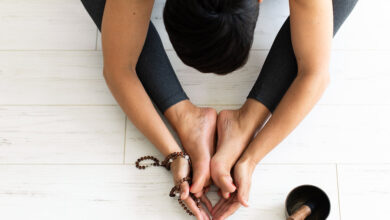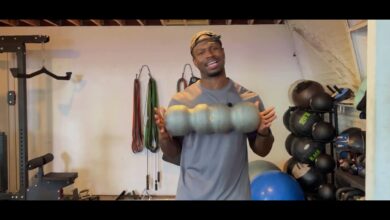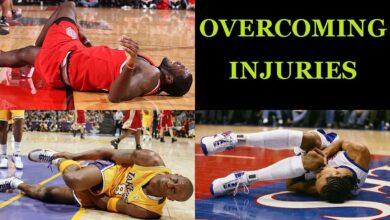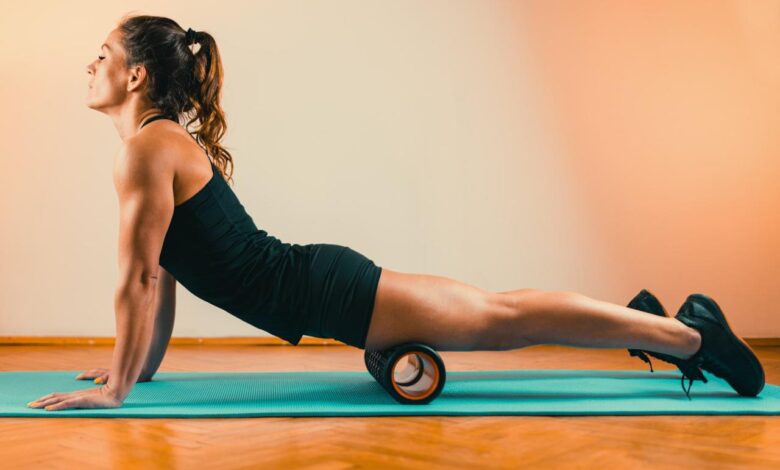
Why You Should Foam Roll Before Your Workout
Why You Should Foam Roll Before Your Workout? It’s a question that many fitness enthusiasts are asking, and for good reason. Foam rolling, a form of self-myofascial release (SMR), has gained popularity as a pre-workout ritual for its ability to improve flexibility, reduce muscle soreness, and enhance athletic performance.
Imagine this: you’re about to hit the gym, but your muscles feel tight and restricted. Foam rolling can help loosen those knots, improve your range of motion, and prepare your body for the workout ahead. It’s like giving your muscles a mini-massage before they go to work, which can lead to better results and a smoother workout experience.
Benefits of Foam Rolling Before a Workout
Foam rolling is a self-myofascial release technique that involves using a foam roller to apply pressure to your muscles and fascia, the connective tissue that surrounds your muscles. This pressure can help to improve flexibility, range of motion, and muscle recovery.
It can also enhance performance by improving blood flow and reducing muscle tension.
Improved Flexibility and Range of Motion
Foam rolling can help to improve flexibility and range of motion by releasing muscle tension and increasing blood flow to the muscles. When muscles are tight, they can restrict movement and reduce flexibility. Foam rolling can help to break up adhesions and knots in the muscles, which can improve flexibility and range of motion.
- Reduced Muscle Tension:Foam rolling can help to reduce muscle tension by breaking up adhesions and knots in the muscles. This can improve flexibility and range of motion by allowing muscles to move more freely.
- Increased Blood Flow:Foam rolling can also help to increase blood flow to the muscles.
This can help to deliver oxygen and nutrients to the muscles, which can help to improve recovery and performance.
Muscle Recovery and Reduced Soreness
Foam rolling can also help to improve muscle recovery and reduce soreness. After a workout, muscles can become sore and stiff due to microscopic tears in the muscle fibers. Foam rolling can help to reduce this soreness by increasing blood flow to the muscles and promoting tissue repair.
Foam rolling before a workout is a great way to improve your range of motion and reduce the risk of injury. It helps loosen up tight muscles and increase blood flow to the area, which can help you perform better and recover faster.
And if you’re looking for a post-workout treat, check out this list of 11 healthy pizzas under 400 calories ! Of course, foam rolling is a great way to prepare for your workout, whether you’re planning to hit the gym or just go for a run.
- Increased Blood Flow:Foam rolling can help to increase blood flow to the muscles, which can help to deliver oxygen and nutrients to the muscles and remove waste products. This can help to reduce soreness and promote healing.
- Reduced Inflammation:Foam rolling can also help to reduce inflammation in the muscles.
Foam rolling before a workout can help improve flexibility and range of motion, which is especially important if you’re planning on pushing your limits, like in an ultra walk. If you’re interested in learning more about ultra walking, check out this article: everything you need to know about ultra walking.
By taking the time to foam roll, you can prepare your body for the challenges of a long walk and potentially reduce the risk of injuries.
This can help to reduce pain and improve recovery.
Enhanced Performance
Foam rolling can also enhance performance by improving blood flow and reducing muscle tension. When muscles are tight, they can restrict movement and reduce performance. Foam rolling can help to improve performance by reducing muscle tension and improving blood flow.
- Improved Blood Flow:Foam rolling can help to increase blood flow to the muscles, which can help to deliver oxygen and nutrients to the muscles and remove waste products. This can help to improve performance by reducing fatigue and improving muscle function.
- Reduced Muscle Tension:Foam rolling can help to reduce muscle tension, which can improve performance by allowing muscles to move more freely and generate more force.
How Foam Rolling Works: Why You Should Foam Roll Before Your Workout
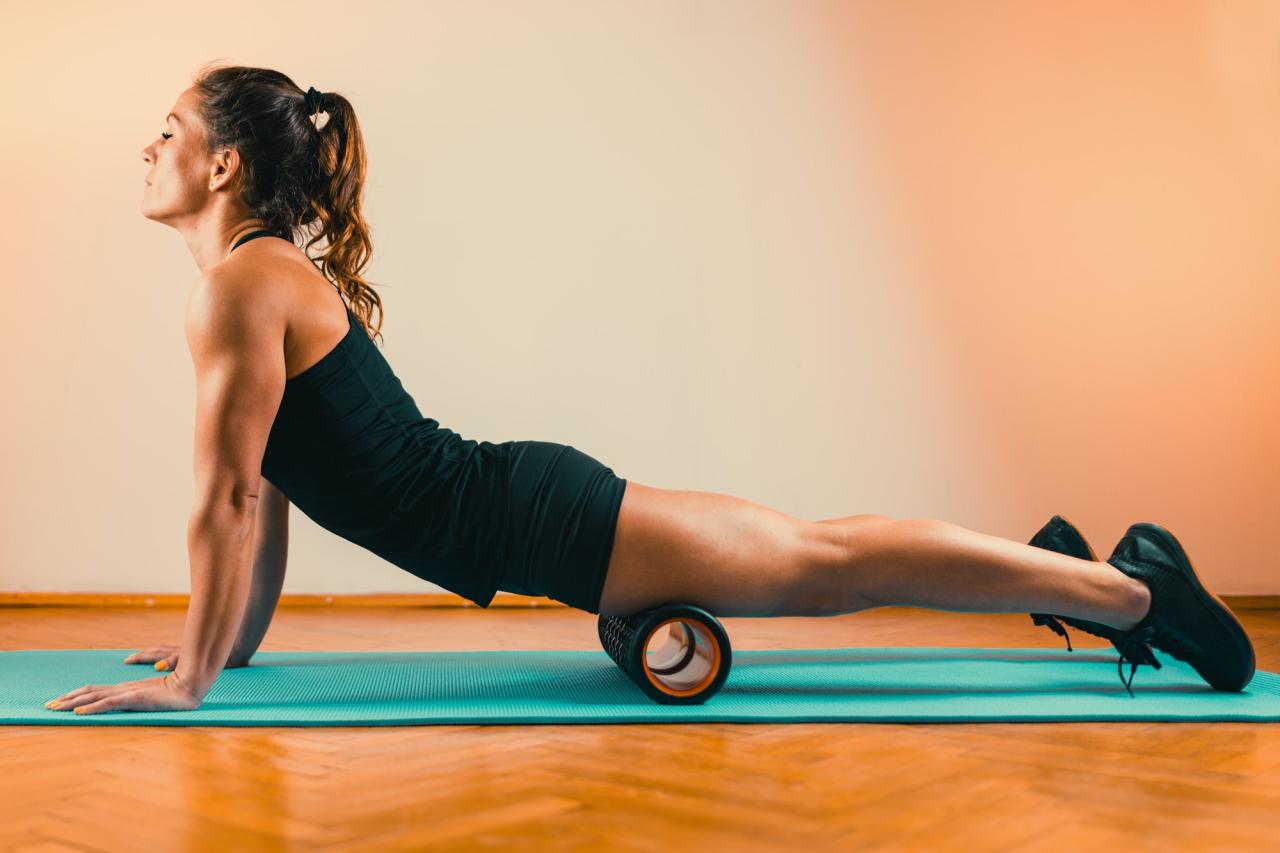
Foam rolling, also known as self-myofascial release (SMR), is a technique that involves applying pressure to your muscles using a foam roller. This pressure helps to release muscle tension, improve flexibility, and enhance performance.
Self-Myofascial Release
Self-myofascial release is a technique that focuses on releasing tension in the fascia, the connective tissue that surrounds muscles. When muscles are tight or injured, the fascia can become restricted, limiting range of motion and causing pain. Foam rolling helps to break up these restrictions, allowing muscles to move more freely.
Types of Foam Rollers
Foam rollers come in various shapes, sizes, and densities. The type of foam roller you choose will depend on your individual needs and preferences.
- Standard Foam Rollers:These are the most common type of foam roller and are typically made from firm, dense foam. They are great for targeting large muscle groups like the quads, hamstrings, and back.
- High-Density Foam Rollers:These rollers are firmer than standard foam rollers and provide deeper pressure. They are ideal for athletes who need to release deep muscle tension.
- Textured Foam Rollers:These rollers have textured surfaces that provide a more stimulating massage. They can help to improve circulation and break up adhesions in the fascia.
- Vibrating Foam Rollers:These rollers combine the benefits of foam rolling with vibration therapy. The vibrations can help to loosen muscles and improve recovery time.
Foam Rolling Techniques
Proper foam rolling technique is essential to maximize the benefits and avoid injury.
- Find the Right Spot:Slowly roll the foam roller over the targeted muscle group, focusing on areas of tightness or pain. You should feel a slight discomfort, but it shouldn’t be unbearable.
- Maintain Steady Pressure:Apply consistent pressure to the muscle while rolling. Don’t press too hard, as this can cause pain or injury.
- Breathe Deeply:Focus on deep, slow breaths while foam rolling. This will help to relax the muscles and reduce tension.
- Hold the Position:When you find a tender spot, hold the pressure for 30-60 seconds. This will allow the muscle to relax and release tension.
- Move Slowly:Roll the foam roller slowly and deliberately, avoiding sudden movements. This will help to prevent injury.
Common Mistakes to Avoid
While foam rolling is generally safe, there are some common mistakes that people make.
- Rolling Too Fast:Rolling too quickly can make it difficult to target specific muscles and increase the risk of injury.
- Applying Too Much Pressure:Excessive pressure can cause pain and damage to muscles and tissues.
- Ignoring Pain:If you experience sharp or intense pain, stop foam rolling immediately. It could be a sign of injury.
- Rolling Over Joints:Avoid rolling directly over joints, as this can put excessive stress on them.
Foam Rolling for Different Workout Types
Foam rolling is a valuable tool for enhancing athletic performance and preventing injuries. While the general principles of foam rolling remain consistent, tailoring your routine to your specific workout type can maximize its benefits. Let’s explore how to optimize foam rolling for different types of workouts.
Foam Rolling for Cardio Workouts
Foam rolling before cardio can improve flexibility and range of motion, reduce muscle stiffness, and enhance blood flow to working muscles. This can lead to improved performance and a faster recovery time. Here are some foam rolling exercises tailored for cardio workouts:* Calf and Achilles: Place the foam roller under your calves and roll from your heel to your toes.
This helps address tightness in the calf muscles, which is common after running or other high-impact activities.
Hamstrings
Foam rolling before your workout can help improve your flexibility and range of motion, which can lead to better performance and reduced risk of injury. But did you know that even registered dietitians, who are experts in nutrition, sometimes struggle with the same issues as everyone else?
Check out this article for 3 surprising takeaways about being a registered dietitian and see how they manage their own health. Getting back to foam rolling, it can also help release tension and improve circulation, making you feel more energized and ready to tackle your workout.
Lie on your back with your legs extended. Place the foam roller under your hamstrings and roll from your glutes to your knees. This helps improve flexibility and reduce muscle soreness in the hamstrings, which can be strained during running and other cardio activities.
Quadriceps
Kneel on the floor with your forearms on the ground. Place the foam roller under your quadriceps and roll from your hip to your knee. This can help address tightness in the quadriceps, which can impact your stride and contribute to knee pain.
Foam Rolling for Strength Training
Strength training often involves repetitive movements that can lead to muscle soreness and tightness. Foam rolling before strength training can help prepare your muscles for the workout, reducing the risk of injury and enhancing performance.Here are some foam rolling exercises tailored for strength training:* Thoracic Spine: Lie on your back with your knees bent and feet flat on the floor.
Place the foam roller under your upper back and roll from your shoulder blades to your lower back. This helps improve mobility in the thoracic spine, which is crucial for proper form during lifting exercises.
Pectoralis Major
Lie face down with the foam roller positioned under your chest. Roll from your sternum to your armpit. This can help address tightness in the chest muscles, which can restrict shoulder movement and impact lifting performance.
Latissimus Dorsi
Place the foam roller horizontally on the floor and lie on your side with the foam roller under your latissimus dorsi muscle. Roll from your armpit to your lower back. This can help improve flexibility and reduce muscle soreness in the lats, which are heavily engaged in many lifting exercises.
Foam Rolling for Yoga
Yoga involves a wide range of movements and stretches, making it crucial to have good flexibility and mobility. Foam rolling can help improve flexibility, reduce muscle tension, and prepare your body for yoga practice.Here are some foam rolling exercises tailored for yoga:* Hip Flexors: Lie on your back with your knees bent and feet flat on the floor.
Place the foam roller under your hip flexors and roll from your hip to your knee. This can help address tightness in the hip flexors, which can limit your range of motion in poses like Warrior I and Pigeon.
Thigh Adductors
Sit on the floor with your legs spread out wide. Place the foam roller between your thighs and roll from your groin to your knees. This can help improve flexibility in the adductor muscles, which can restrict your range of motion in poses like Butterfly and Wide-legged Forward Fold.
IT Band
Lie on your side with the foam roller under your IT band. Roll from your hip to your knee. This can help address tightness in the IT band, which can contribute to knee pain and limit flexibility in poses like Warrior II and Triangle.
Foam Rolling for Different Fitness Levels
Foam rolling is a valuable tool for improving flexibility, range of motion, and muscle recovery, and its benefits can be enjoyed by individuals of all fitness levels. It is crucial to adjust foam rolling exercises based on your fitness level to maximize its effectiveness and minimize the risk of injury.
Foam Rolling for Beginners
Beginners should start with basic foam rolling exercises and focus on building a foundation of mobility and flexibility.
- Start with shorter sessions, aiming for 5-10 minutes at a time.
- Focus on areas that are typically tight, such as the quads, hamstrings, and calves.
- Use a softer foam roller for increased comfort and support.
- Avoid excessive pressure and focus on gentle rolling movements.
- Hold each stretch for 15-30 seconds.
As you progress, you can gradually increase the duration of your foam rolling sessions and the intensity of the exercises.
Foam Rolling for Intermediate Fitness Levels
Intermediate fitness levels can incorporate more advanced foam rolling techniques and target specific muscle groups.
- Increase the duration of your foam rolling sessions to 10-15 minutes.
- Experiment with different foam rolling techniques, such as rolling with a partner or using a lacrosse ball for deeper tissue release.
- Incorporate more challenging exercises, such as rolling your IT band or the back of your shoulders.
- Focus on areas that are commonly tight for your specific sport or activity.
- Hold each stretch for 30-60 seconds.
Foam Rolling for Advanced Athletes
Advanced athletes can use foam rolling as a crucial part of their training regimen to enhance performance and prevent injuries.
- Extend your foam rolling sessions to 15-20 minutes.
- Use a variety of foam rolling tools, including high-density rollers and massage balls.
- Target specific muscle groups that are most affected by your training, such as the glutes, hip flexors, and core muscles.
- Incorporate dynamic stretching and mobility exercises after foam rolling.
- Use foam rolling to address any muscle imbalances or areas of tightness that may be hindering your performance.
Modifications for Limited Mobility
For individuals with limited mobility or specific physical conditions, it is essential to adapt foam rolling exercises to suit their needs.
- Use a softer foam roller for added comfort and support.
- Start with shorter sessions and gradually increase the duration as tolerated.
- Focus on areas that are accessible and comfortable to roll.
- Avoid rolling over areas of pain or discomfort.
- Consult with a physical therapist or healthcare professional for personalized recommendations.
Remember to listen to your body and stop if you experience any pain.
Progressive Foam Rolling Program, Why you should foam roll before your workout
A progressive foam rolling program can help you gradually increase the intensity and duration of your foam rolling sessions.
- Start with a beginner-level program and gradually progress to intermediate and advanced levels as your fitness improves.
- Listen to your body and adjust the program as needed.
- Focus on consistency and gradually increase the duration and intensity of your foam rolling sessions over time.
Here is an example of a progressive foam rolling program:
| Level | Duration | Intensity | Exercises |
|---|---|---|---|
| Beginner | 5-10 minutes | Gentle | Quads, hamstrings, calves, upper back |
| Intermediate | 10-15 minutes | Moderate | IT band, hip flexors, glutes, chest, shoulders |
| Advanced | 15-20 minutes | High | All areas, including deeper tissue work |
Conclusive Thoughts
Incorporating foam rolling into your pre-workout routine can be a game-changer for your fitness journey. It’s a simple yet effective way to enhance your performance, reduce injury risk, and enjoy a more fulfilling workout experience. So, the next time you’re about to hit the gym, take a few minutes to foam roll and feel the difference it makes.
Your body will thank you!



